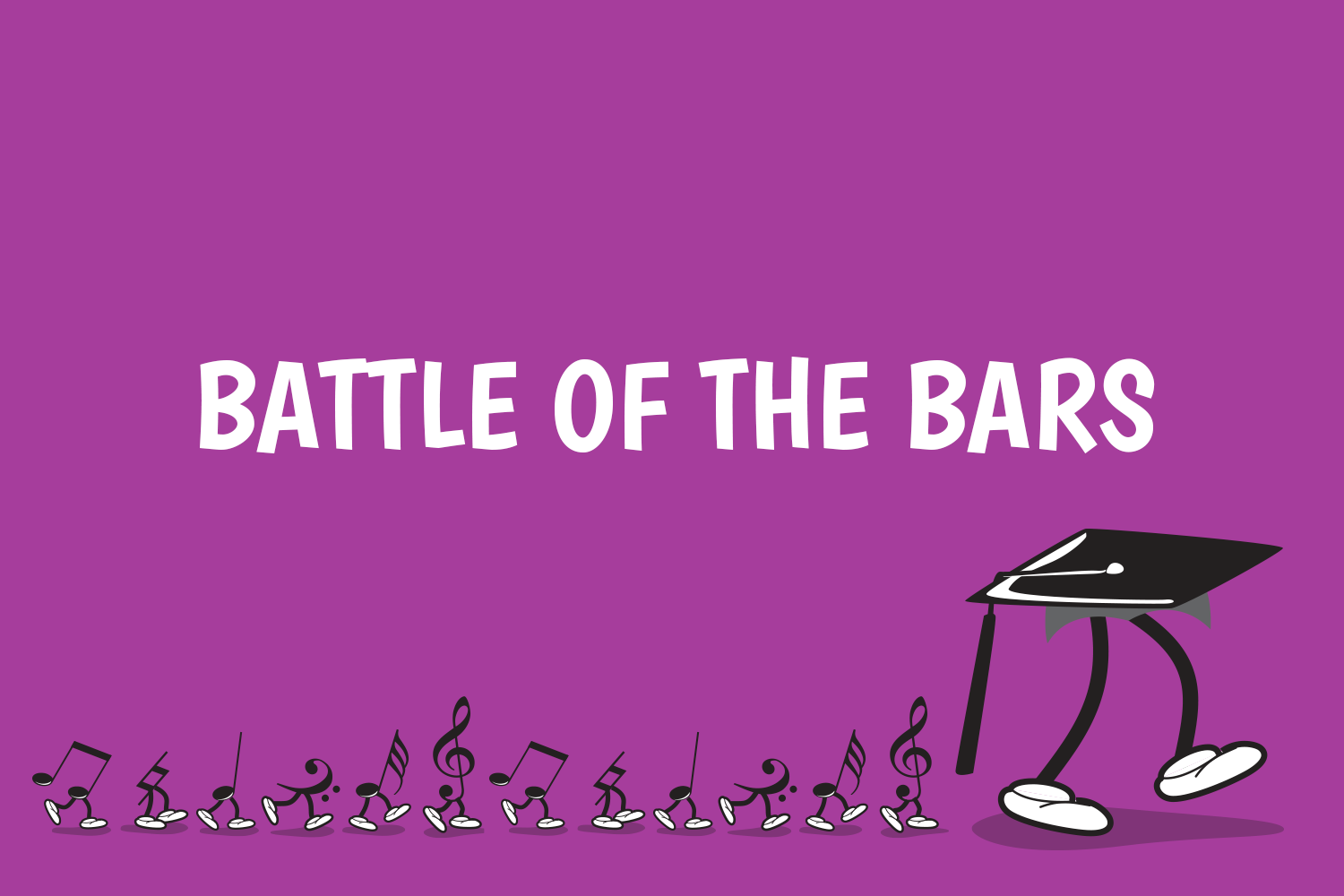Battle of the Bars

It has been a while since I’ve instigated a competition of sorts with my students. In the past I’ve had things like the House Points system which tallied up minutes of practice and the 50-piece challenge which tallied up actual pieces learned. However I felt there needed to be something new, a bit of a twist on the way a goal is achieved, something to motivate them to learn repertoire more quickly AND more thoroughly. I also wanted my students to be rewarded during the learning of a piece, rather than at the end. So this term I am trying ‘Battle of the Bars’!!!
I have decided to award points per bar of music learned. To get the points, the bar has to be perfect: hands together (of course), absolutely accurate, with all dynamics, articulation and expression, and it must be UP TO SPEED. There is [yet another] chart on my wall next to the piano with each student’s name on it, and fairly big columns to write in so that the actual bars learned can be documented each week (keeping in mind that you can can’t receive points for the same bar twice). Students can earn 10 points per bar of music learned (I decided 10 points was far more fun than just 1 point). For the average two-page piece in Grade 1, this is about 300 points!
Awarding points for bars learned, rather than whole pieces, means that the approach to learning pieces must change entirely. No points can be awarded for playing hands separately in the lesson. No points can be awarded for playing the whole piece two hands really slowly. But LOTS of points can be awarded for playing just a few bars of the piece really beautifully.
It is quite easy for students to perfect at least one bar of a piece even when it is brand new. So this system has been really fun when introducing a new piece, as it’s more than achievable to earn some points straight away. But the best thing about it is this: points can only be awarded when the bar is perfect in every way. So it forces us to look at every concept in the bar immediately – dynamics, tempo, accents etc. – which is a change in approach, because so often we get caught up only looking at the notes and rhythm when a piece is new, and nothing else.
Over the four weeks that ‘Battle of the Bars’ has been going so far, I have enjoyed seeing students employ different and effective practice strategies to get bars of music learned more efficiently. The more savvy/cheeky students come back the following week with all the ‘easy’ bars learned, scattered throughout the piece. But they know that they can’t get those points again, so they have to move on to the ‘harder’ bars. They still play RH/LH separately and practice under speed, but these are practice techniques used AT HOME, as a means to an end to be able to play a small section really well. (This also means I don’t have to sit through all the separate hands stuff – yay!) There is now a short term goal to be achieved, so their practice has more focus. It’s working really well, especially for this digital native generation, whose brains work so much faster!
In the second week of the challenge I could see that with learning bars here and there, there might be a problem achieving overall fluency in the piece. So the way I got around this problem was to announce that DOUBLE BONUS POINTS would be awarded once the whole piece was played fluently! This created much excitement and has been a fantastic motivator to gain many hundreds of points.
One student came this week with a new piece perfected that I had not heard even once before! So she got double points straight away and was delighted.
So far ‘Battle of the Bars’ is a success. Motivation is high and there is A LOT of attention to the detail in the music! I encourage you to give it a go with your own students, and if you do, please let me know how it goes!
